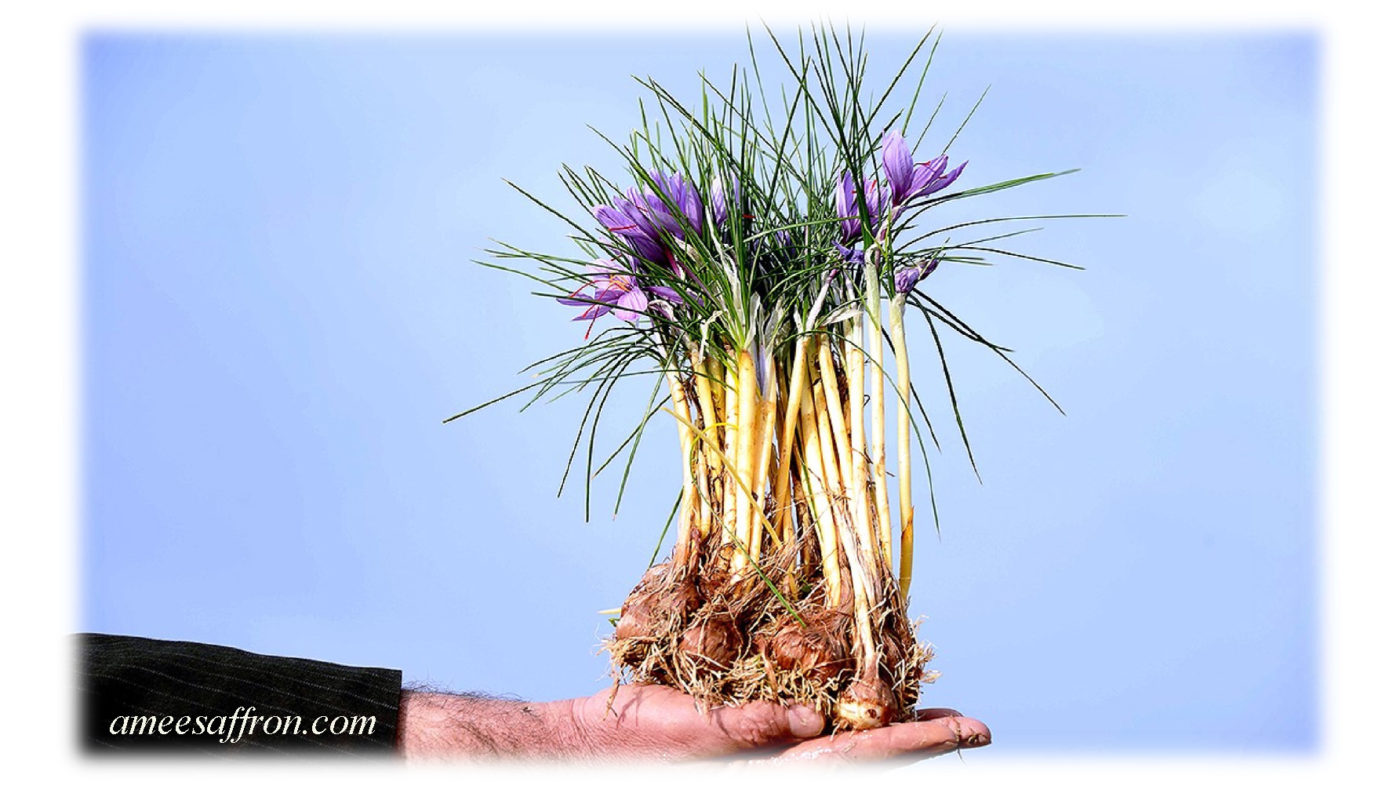What is Saffron ?

The Crocus sativus plant grows to about 5-10 cm in height and bears lavender colored flowers during each season which lasts from October till November. Each flower features perianth which consists of stalk, known as “style”, connecting to the three “stigmas” or “threads” to the rest of the plant. These orange-yellow colored stigmas along with the style constitute “saffron” which is used as spice.
The Saffron ( stigmas ) are the female part of the flower. In a good year, each saffron crocus plant might produce several flowers. Each flower contains three stigmas, which are the only part of the saffron crocus that when dried (cured) properly, become commercial saffron. Each red stigma is like a little capsule that encloses the complex chemicals that make up saffron’s aroma, flavour, and yellow dye. In order to release these chemicals, you must steep the threads.
We have been selling saffron for many years and in that time period have never ceased to be amazed by its uniqueness in the spice world. Saffron’s aroma is unique and there is no substitute for it. Saffron has an aroma and flavour which cannot be duplicated, and a chemical make-up which, when understood, helps the chef or home cook to know how to best release that flavour and aroma in cooking and baking.
In order to understand commercial saffron, it is important to understand the make-up of the saffron plant. More importantly, it is the easiest way for you, as a consumer, to be sure you are buying good saffron. Commercial saffron comes from the bright red stigmas of the saffron crocus (Crocus sativus) which flowers in the fall in many different countries, including India, Iran, Greece and Spain.
Because the manufacturing of supplements (such as saffron) is not closely regulated, it is important to choose a trustworthy manufacturer of your supplements. It is a good idea to look for the “ISO” symbol, as this means the supplement has been tested and contains the right ingredients in the right amounts.
Different Name of Saffron :
Botanical Name : Crocus sativus L.
Commercial Part : Stigma
Indian Names :
Hindi : Kesar
Bengali : Jafran
Gujarati : Keshar
Kannada : Kumnkuma kesari
Kashmiri : Kong
Malayalam : Kunkumapoove
Marathi : Keshar, Kesara
Punjabi : Kesar, Zafran
Sanskrit : Keshara, Kunkuma, Aruna, Asra, Asrika
Tamil : Kungumapoo
Urdu : Zafran
Name In International Languages :
Spanish : Azafran
French : Safran
German : Safran
Swedish : Saffran
Arabic : Zafran
Dutch : Saffraan
Italian : Zafferano
Portuguese : Acofrao
Russian : Shafran
Japanese : Safuran
Chinese : Fan Hung-Hua




